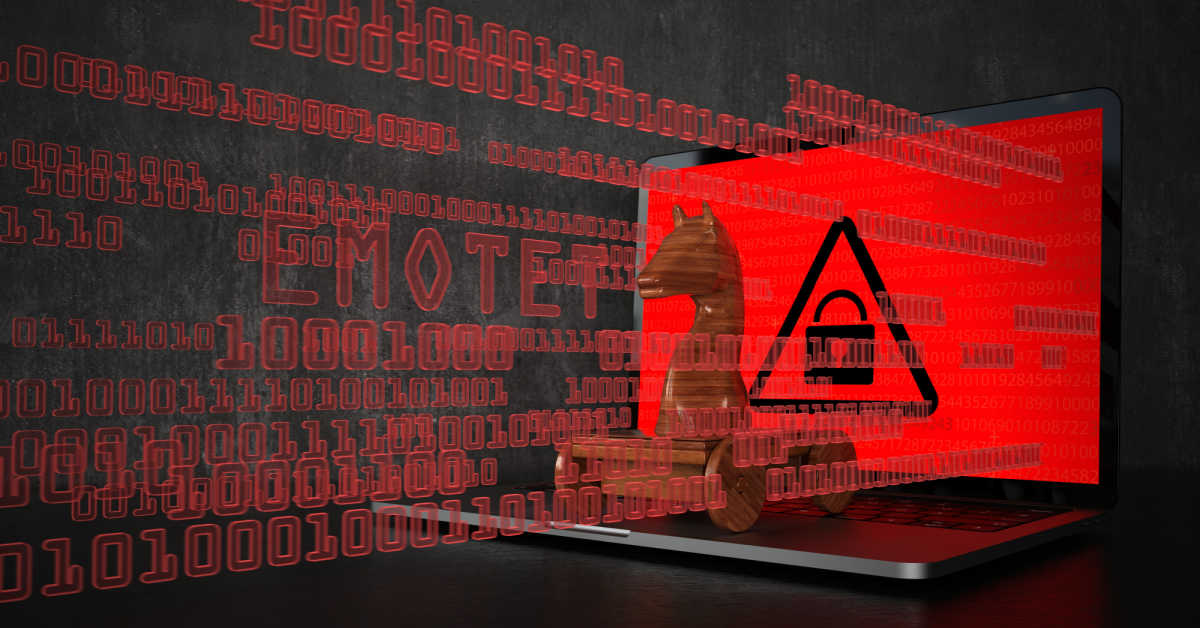An individual can take control of a particular computer system from a distance using malware known as a Remote Access Trojan (RAT). This article will discuss the definition of RATs, their roles, the potential harm, the best practices for preventing RAT malware attacks, and how to identify if your system has been attacked.
What is a Remote Access Trojan?
The potentially harmful malware variant known as a Remote Access Trojan might provide a hacker remote access to your machine. You must take immediate measures to safeguard your device and stop unwanted access. RATs are often hidden in seemingly harmless files or applications and can remain undetected for an extended period, giving the attacker ample time to carry out their objectives.
A RAT may provide an attacker total control over a system once it has been compromised, enabling them to run any command they like, view and download data, install other malware, or utilize the device for other harmful purposes.
RATs are frequently employed in targeted cyberattacks or cyber espionage operations to acquire sensitive data, including trade secrets, financial information, or other priceless data.
There are different types of RATs. Their capabilities vary significantly, from basic remote control functionality to sophisticated attack features such as keylogging, data exfiltration, and even webcam or microphone activation.
Identifying and removing a RAT from an infected system as soon as possible is essential to prevent further harm.

Different types of Remote Access Trojan
Remote Access Trojans come in different types and can have various capabilities. Below are some of the most common RATs:
Back Orifice
Back Orifice is one of the earliest RATs developed. It was created by a hacker group known as the Cult of the Dead Cow in 1998. Back Orifice allows attackers to take full control of a system, such as executing commands, managing files, and controlling the desktop. It can also capture keystrokes, record audio, and take screenshots.
Poison Ivy
Poison Ivy is a popular RAT that can be used for espionage, data theft, and remote access. It is highly customizable and can bypass anti-virus detection, making it a preferred tool for advanced persistent threat (APT) groups. Poison Ivy can capture keystrokes, record audio, and video, and control the system remotely.
NetBus
NetBus is a RAT that allows attackers to control a targeted system's keyboard and mouse. It can also capture screenshots, manage files, and execute commands.
DarkComet
DarkComet is a powerful RAT with a wide range of features. It can capture keystrokes, steal passwords, take screenshots, and control the webcam and microphone. DarkComet has built-in anti-virus detection, making it challenging to detect.
Gh0st RAT
Gh0st RAT is a popular tool for cybercriminals and APT groups. It can capture keystrokes, steal passwords, and take screenshots. Gh0st RAT is known for its ability to remain undetected by anti-virus software.
RATs can be customized, and new variants are continually being developed. To avoid RAT attacks, it's critical to keep up with the most recent threat intelligence and implement security measures.
How do RATs infect a system?
Remote Access Trojans can infect a system in various ways. Here are some standard methods that attackers use to spread RATs:
- Email attachments: Attackers can use phishing emails with infected attachments to spread RATs. These emails may appear from a trusted source, such as a bank or a well-known company, and can trick users into opening the attachment, infecting the system.
- Malicious websites: Attackers can create malicious websites with drive-by downloads to spread RATs. Such a website automatically downloads and installs the RAT on the user's computer when they visit it.
- Software bundles: RATs can be bundled with legitimate software and applications, and when a user installs them, the RAT is also installed on the system.
- USB drives: Attackers can also infect a system by spreading RATs through infected USB drives. When a user inserts the USB drive into their computer, the RAT is automatically installed on the system.
What are the dangers of RATs?
Remote Access Trojans pose several risks to individuals and organizations. Here are some of the most significant dangers of RATs:
- Data theft: The capability of RATs to steal important data such as financial information, usernames, passwords, and personal information must be understood. The importance of this should not be understated. Attackers can even also use RATs to record keystrokes, take screenshots, and capture webcam footage.
- System hijacking: RATs can take full control of a system, allowing attackers to gain access to files, execute commands, and even lock the user out of their own computer.
- Ransomware: Attackers can use RATs to deliver ransomware to a system, encrypting the victim's files and demanding payment in exchange for the decryption key.
- Botnets: Botnets, which are networks of compromised devices that may be used for a variety of criminal activities including launching Distributed Denial of Service DDoS attacks or sending spam emails, can be made using RATs.
- Espionage: RATs can be used for espionage, allowing attackers to monitor the victim's activities and steal sensitive information.
- Remote access: As mentioned earlier, a system may be remotely accessed via RATs, enabling attackers to exploit it as a portal to other computers on the network.
How to identify a RAT attack
Identifying a Remote Access Trojan attack can be challenging, as the attacker may use advanced techniques to hide their presence. Here are some signs that your system may have been infected with a RAT:
- Strange network activity: If you notice unusual network activity, such as high network usage when you're not using the internet or data transfers occurring without your permission, it could be a sign of a RAT attack.
- Suspicious processes: RATs can run in the background of a system without the user's knowledge. Your computer may be under a RAT attack if you detect any strange programs running on it or if it is functioning slowly or constantly crashes.
- Strange pop-ups or messages: If you receive strange pop-ups or messages on your computer, especially those asking for sensitive information or claiming that your system is infected with a virus, it could be a sign of a RAT attack.
- Anti-virus alerts: It's critical to act quickly to eliminate the danger and stop additional harm if your anti-virus software discovers a Remote Access Trojan or other malware on your machine.
- Disabled security software: To prevent discovery, RATs might turn off security software. That can be an indication of a RAT attack if you discover that your firewall or anti-virus program has been deactivated.
Moreover, it's critical to act quickly if you believe that your machine has been infected with a RAT. To eliminate the threat and safeguard your infected machines and system, unplug your system from the internet and seek the assistance of a cybersecurity expert. Another way to reduce the chances of a RAT attack is to regularly back up your data.
Preventing RAT attacks: Best practices
Protecting against Remote Access Trojans requires a proactive and vigilant approach. Here are some best practices for preventing RAT attacks:
Keep software up-to-date
Maintaining the most recent versions of your operating system, programs, and anti-virus software will help shield you from RAT attacks. Software updates often include security patches and bug fixes that can address vulnerabilities that attackers could exploit.
Use strong passwords
Avoid using passwords that are simple to guess, such as "password" or "12345." Instead, vary the case of your letters by using capital and lowercase letters, digits, and special characters.

Be cautious of suspicious links and emails
Avoid clicking on suspicious links or downloading attachments from unknown or suspicious emails. These could be phishing emails that trick you into downloading malware or revealing sensitive information.
Use anti-virus and firewall software
Anti-virus software and firewalls can help protect against RATs by detecting and blocking malicious traffic. It is crucial to keep this software up-to-date and to run regular scans.
Implement network security measures
Implementing network security measures, such as intrusion detection and prevention systems, can help detect and prevent RAT attacks on your network. Restricting access to critical systems and data is also essential, ensuring that only authorized personnel can access them.
Educate employees
Educating employees on recognizing and preventing RAT attacks can help strengthen your organization's security posture. This includes teaching them to avoid suspicious links and emails, use strong passwords, and report suspicious activity.
Following these best practices can help prevent RAT attacks and protect your systems and data. Maintaining a proactive and vigilant approach to cybersecurity is crucial to stay ahead of the evolving cyber threat landscape.
Final thoughts on Remote Access Trojan
It is crucial to have a proactive and watchful attitude to cybersecurity as the danger posed by Remote Access Trojans develops. By staying informed about the latest threats and adopting best practices, you can help ensure your systems’ and data's security, integrity and away from malware infection.
With extensive experience with cyber security and IT infrastructure solutions, Sangfor offers a wide range of products and solutions to help your organization stay protected at all times.





